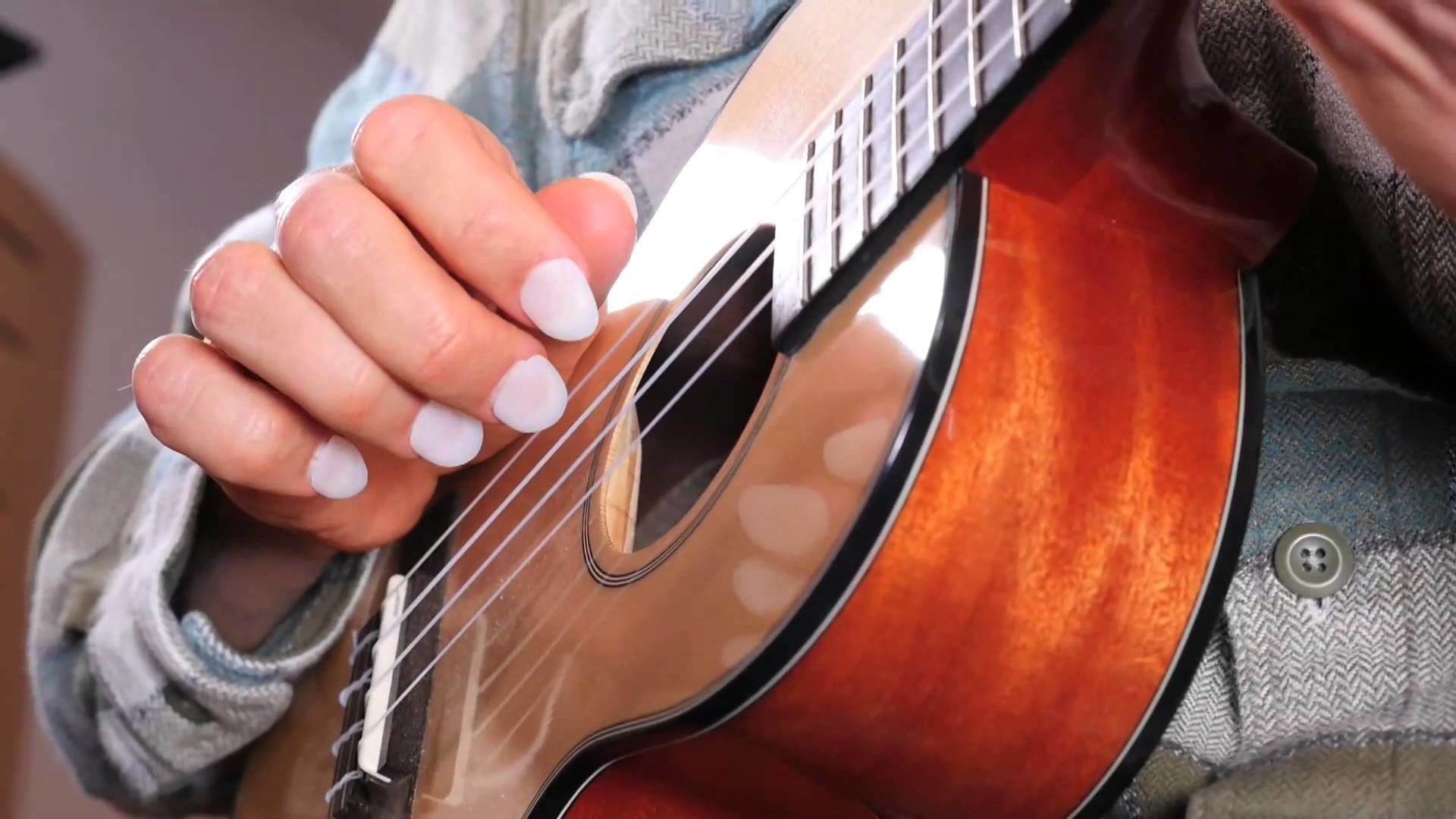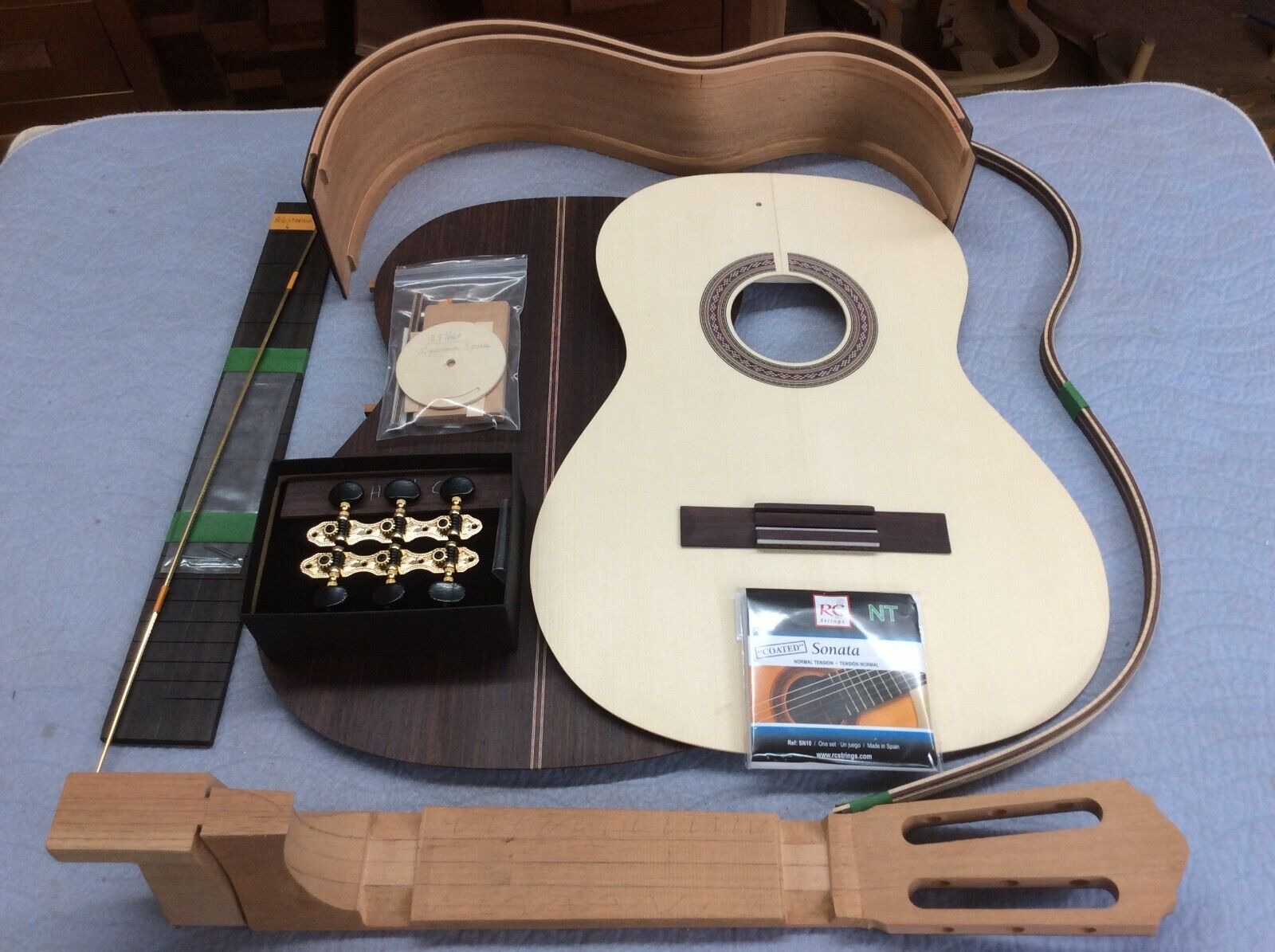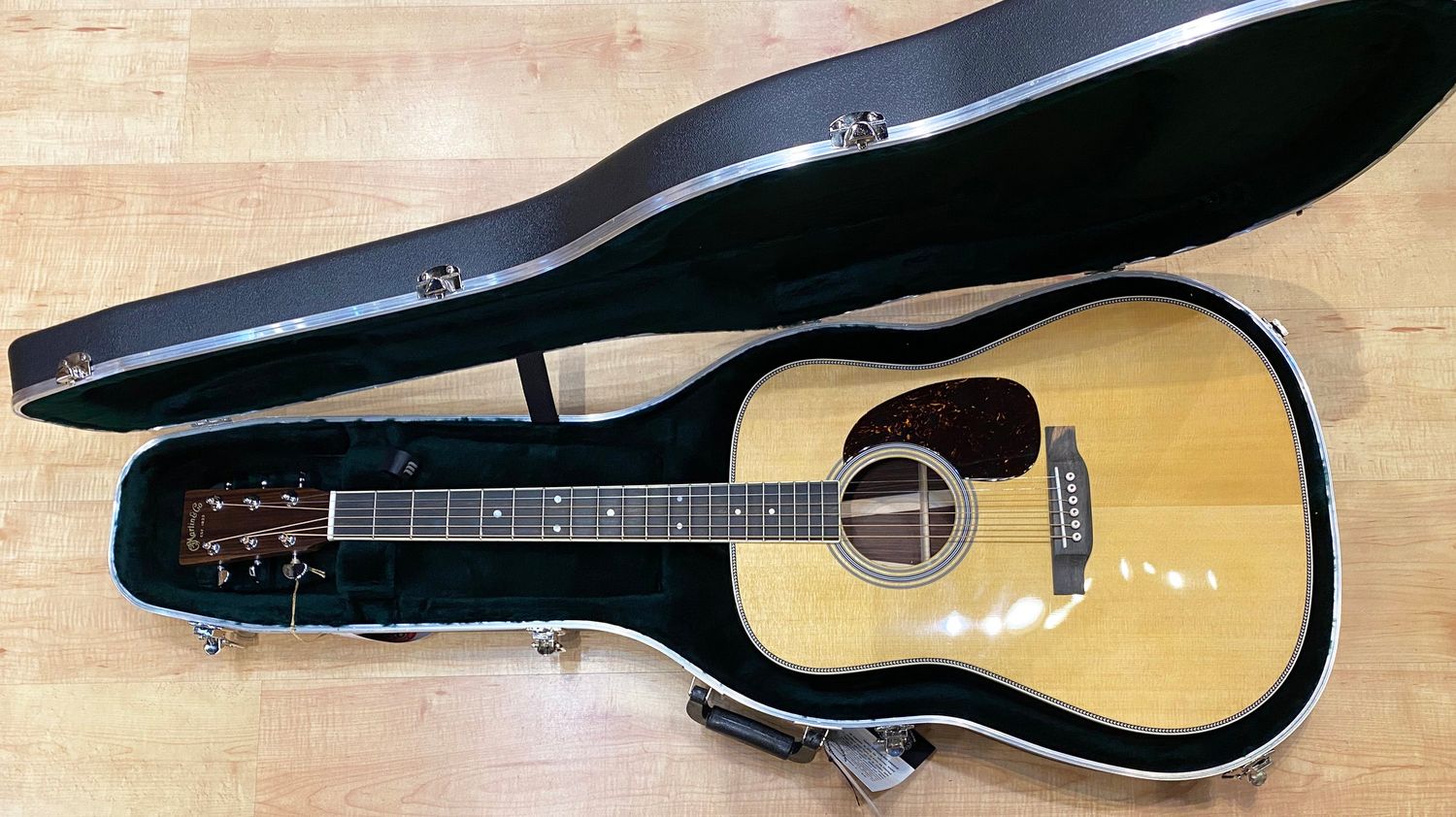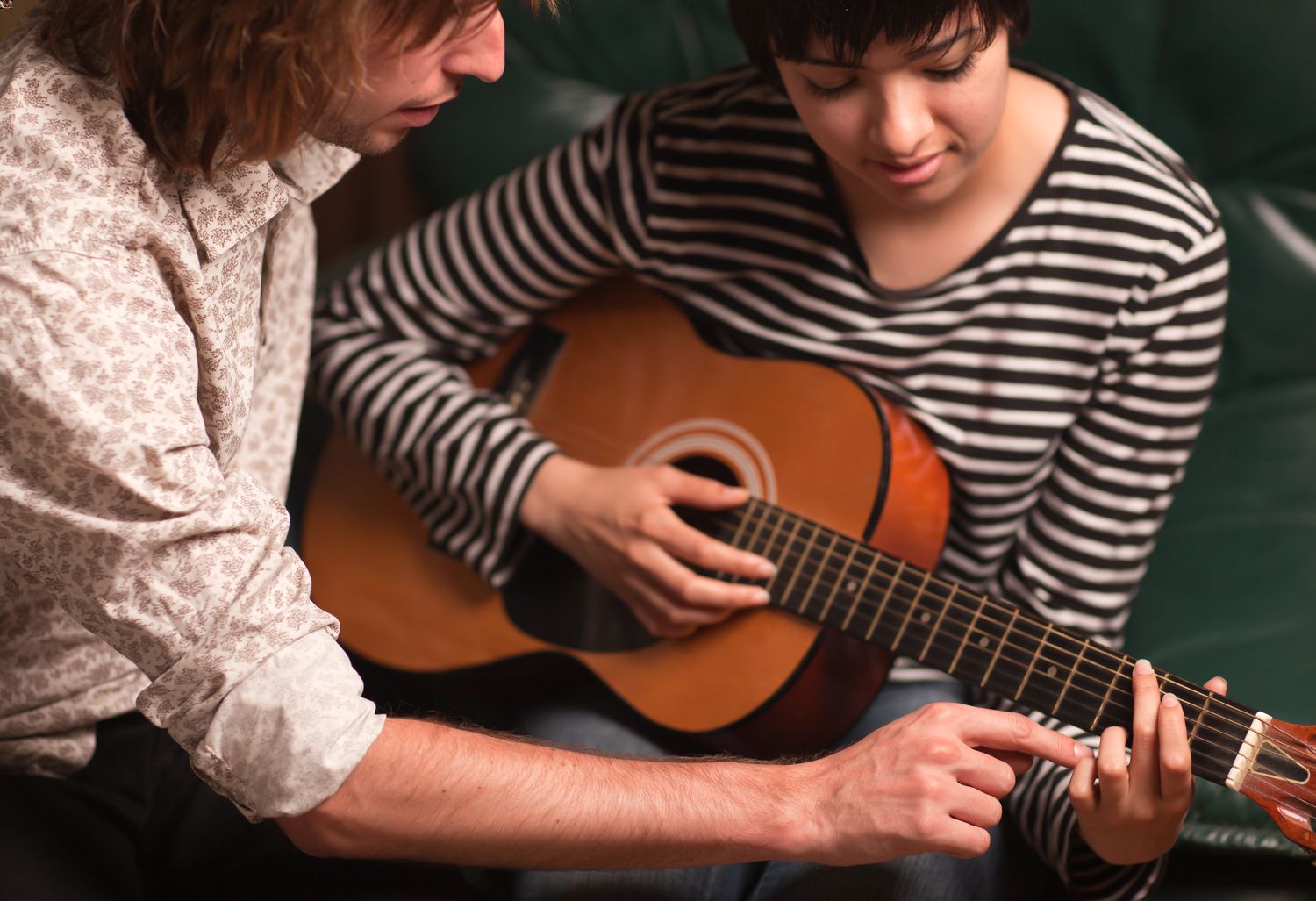Home>Instruments>Guitar>How To Strengthen The Fingertips For A Guitar


Guitar
How To Strengthen The Fingertips For A Guitar
Published: February 14, 2024
Learn effective techniques to strengthen your fingertips for playing the guitar. Discover exercises and tips to improve your guitar playing skills.
(Many of the links in this article redirect to a specific reviewed product. Your purchase of these products through affiliate links helps to generate commission for AudioLover.com, at no extra cost. Learn more)
Table of Contents
Introduction
Playing the guitar is a gratifying experience that allows individuals to express themselves through music. Whether you're a beginner or an experienced guitarist, the strength and dexterity of your fingertips play a crucial role in producing clear and resonant sounds. In this article, we will explore the significance of strengthening the fingertips for guitar playing, delve into various exercises tailored to enhance fingertip strength, and provide essential tips for maintaining this strength over time.
The fingertips act as the point of contact between the strings and the fretboard, making them pivotal in producing distinct notes and chords. Without adequate strength in the fingertips, executing complex chord shapes, intricate melodies, and dynamic techniques can become challenging. Furthermore, weak fingertips may lead to discomfort or pain during prolonged practice sessions, hindering the overall enjoyment of playing the guitar.
As such, it is essential for guitarists to prioritize the development and maintenance of strong fingertips to unlock their full potential as musicians. By incorporating targeted exercises and adopting proper techniques, individuals can not only improve their playing capabilities but also prevent potential injuries associated with repetitive strain.
In the subsequent sections, we will explore a range of exercises specifically designed to bolster fingertip strength, along with valuable tips for integrating these practices into your regular guitar routine. Whether you aspire to master intricate solos, strum captivating rhythms, or simply enjoy the meditative process of playing, investing in the strength of your fingertips is a fundamental step towards achieving your musical aspirations. Let's embark on this journey to fortify our fingertips and elevate our guitar playing to new heights.
Importance of Strengthening Fingertips for Guitar Playing
When it comes to playing the guitar, the fingertips are the bridge between the player’s intentions and the instrument’s sound. Strengthening these crucial points of contact is paramount for several reasons:
- Precision and Clarity: Strong fingertips allow for precise and controlled placement on the fretboard, resulting in clear and resonant notes. This is particularly vital when executing complex chord shapes and intricate melodies, as it enhances the overall articulation and definition of the music being played.
- Endurance and Stamina: Building strength in the fingertips contributes to greater endurance during extended playing sessions. This is especially beneficial for live performances, studio recordings, or lengthy practice sessions, as it reduces the likelihood of fatigue and maintains consistency in sound quality.
- Expressiveness and Dynamics: Well-conditioned fingertips enable guitarists to convey a wide range of dynamics and nuances in their playing. From subtle fingerstyle techniques to powerful bends and vibrato, strong fingertips facilitate a heightened level of expressiveness, allowing musicians to imbue their performances with emotion and artistry.
- Injury Prevention: Strengthening the fingertips helps mitigate the risk of repetitive strain injuries and discomfort associated with prolonged playing. By developing resilience in the fingertips, guitarists can safeguard themselves against common ailments such as tendonitis and carpal tunnel syndrome, promoting long-term playing longevity and enjoyment.
Furthermore, the process of strengthening the fingertips fosters a deeper connection between the player and the instrument, enhancing overall control and responsiveness. This heightened tactile awareness not only elevates technical proficiency but also enriches the sensory experience of playing the guitar, fostering a more intimate and intuitive relationship with the instrument.
Ultimately, the importance of strengthening the fingertips for guitar playing extends beyond technical prowess; it encompasses a holistic approach to musicianship, encompassing precision, endurance, expressiveness, and physical well-being. By recognizing and prioritizing the development of fingertip strength, guitarists can unlock their full potential and embark on a journey of musical growth and fulfillment.
Exercises to Strengthen Fingertips
Enhancing fingertip strength is a gradual process that involves targeted exercises designed to fortify the muscles and improve dexterity. Incorporating the following exercises into your practice routine can yield significant improvements in fingertip strength and control:
- Spider Walk: This exercise involves placing each finger on a different fret of the same string, then sequentially lifting and placing them back down in a “crawling” motion. Gradually move across all strings, ensuring each finger is actively engaged. This exercise enhances finger independence and strengthens the fingertips through controlled movement.
- Fretting Endurance: Select a challenging chord or scale pattern and practice holding down the fretted notes for extended durations. Focus on maintaining consistent pressure and clarity of sound. Gradually increase the duration of each repetition to build endurance and strength in the fingertips.
- Trill Exercises: Trills involve rapid alternation between two notes, typically using adjacent fingers. Practicing trills across various frets and string combinations can significantly enhance fingertip strength, agility, and coordination.
- Finger Tapping: Incorporate tapping exercises into your practice routine, utilizing your fingertips to produce clear and articulate sounds on the fretboard. This technique not only strengthens the tapping finger but also enhances overall fingertip control and precision.
- Barre Chord Practice: Barre chords require substantial fingertip strength to effectively press down multiple strings with a single finger. Devote time to practicing barre chord transitions and sustaining clear, resonant barre shapes to bolster fingertip strength and endurance.
It is essential to approach these exercises with mindfulness and patience, focusing on maintaining proper technique and gradually increasing the intensity as your fingertip strength improves. Consistent and deliberate practice of these exercises will yield tangible enhancements in fingertip dexterity, resilience, and overall playing proficiency.
Additionally, integrating finger strengthening tools such as grip trainers and hand exercisers into your practice regimen can complement these exercises, providing targeted resistance to further develop fingertip strength and coordination.
By incorporating these exercises and tools into your daily practice routine, you can cultivate robust fingertip strength, empowering you to navigate the fretboard with confidence, precision, and expressive freedom.
Tips for Maintaining Fingertip Strength
After diligently strengthening your fingertips, it’s essential to maintain their strength and agility to support consistent and enjoyable guitar playing. Consider the following tips to preserve and enhance your hard-earned fingertip strength:
- Regular Warm-Up and Stretching: Prior to practice or performance, engage in gentle warm-up exercises to promote blood circulation and flexibility in the fingertips. Incorporate stretching movements to alleviate tension and prepare the fingers for optimal performance.
- Varied Repertoire and Techniques: Explore diverse musical styles and playing techniques to engage the fingertips in a range of movements and demands. This diversity fosters well-rounded strength and adaptability, preventing over-reliance on specific finger patterns and reducing the risk of strain.
- Proper Hand and Finger Positioning: Maintain correct hand and finger positioning while playing to minimize unnecessary strain on the fingertips. Pay attention to ergonomic principles and seek guidance on optimal finger placement from experienced instructors or resources.
- Hydration and Moisturizing: Keep your fingertips hydrated by drinking ample water and using moisturizing creams or lotions to prevent dryness and cracking. Well-moisturized fingertips are more supple and resilient during prolonged playing.
- Rest and Recovery: Allow adequate rest periods for your fingertips to recuperate after intense practice or performances. Balancing active playing with sufficient rest promotes long-term fingertip health and resilience.
- Healthy Lifestyle Choices: Maintain overall physical well-being through proper nutrition, regular exercise, and adequate sleep. A holistic approach to health supports fingertip strength and overall playing endurance.
Furthermore, integrating finger-focused exercises, such as hand grippers and stress balls, into your daily routine can help sustain and enhance fingertip strength. These tools provide targeted resistance and conditioning, promoting ongoing development and resilience in the fingertips.
Lastly, listen to your body and be attentive to any signs of strain or discomfort in your fingertips. If you experience persistent pain or tension, seek guidance from a qualified instructor or medical professional to address potential issues and prevent long-term injury.
By implementing these tips and practices, you can safeguard and optimize the strength of your fingertips, ensuring a rewarding and sustainable guitar playing experience for years to come.
Conclusion
Strengthening the fingertips is an indispensable pursuit for guitarists seeking to elevate their playing capabilities and ensure long-term enjoyment of the instrument. By recognizing the significance of fingertip strength and integrating targeted exercises into their practice routines, guitarists can unlock a myriad of benefits that extend beyond technical proficiency.
The journey to fortify the fingertips is a multifaceted endeavor, encompassing precision, endurance, expressiveness, and physical well-being. Through exercises such as the spider walk, fretting endurance drills, trills, finger tapping, and barre chord practice, guitarists can cultivate robust fingertip strength, enhancing their control, agility, and resilience on the fretboard.
Furthermore, maintaining fingertip strength requires a holistic approach, encompassing regular warm-ups, varied repertoire exploration, proper positioning, hydration, rest, and overall well-being. By adhering to these practices and incorporating finger-focused exercises and tools, guitarists can sustain their fingertip strength and safeguard against potential injuries or discomfort.
Ultimately, the development and maintenance of fingertip strength empower guitarists to express themselves with clarity, precision, and emotive depth, fostering a profound connection between the player and the instrument. This enhanced tactile awareness and control not only elevate technical proficiency but also enrich the sensory experience of playing the guitar, nurturing a more intimate and intuitive relationship with music.
As guitarists embark on this journey of fingertip fortification, they are poised to unlock their full potential, navigate the fretboard with confidence, and imbue their performances with artistry and dynamism. By prioritizing the strength and well-being of their fingertips, musicians can embark on a path of continuous growth, resilience, and fulfillment in their musical endeavors.
In conclusion, the pursuit of fingertip strength is not merely a technical exercise; it is a holistic commitment to nurturing one’s musicality, physical well-being, and artistic expression. Through dedicated practice, mindfulness, and care, guitarists can cultivate resilient and agile fingertips, paving the way for a lifetime of enriching and captivating guitar playing experiences.











